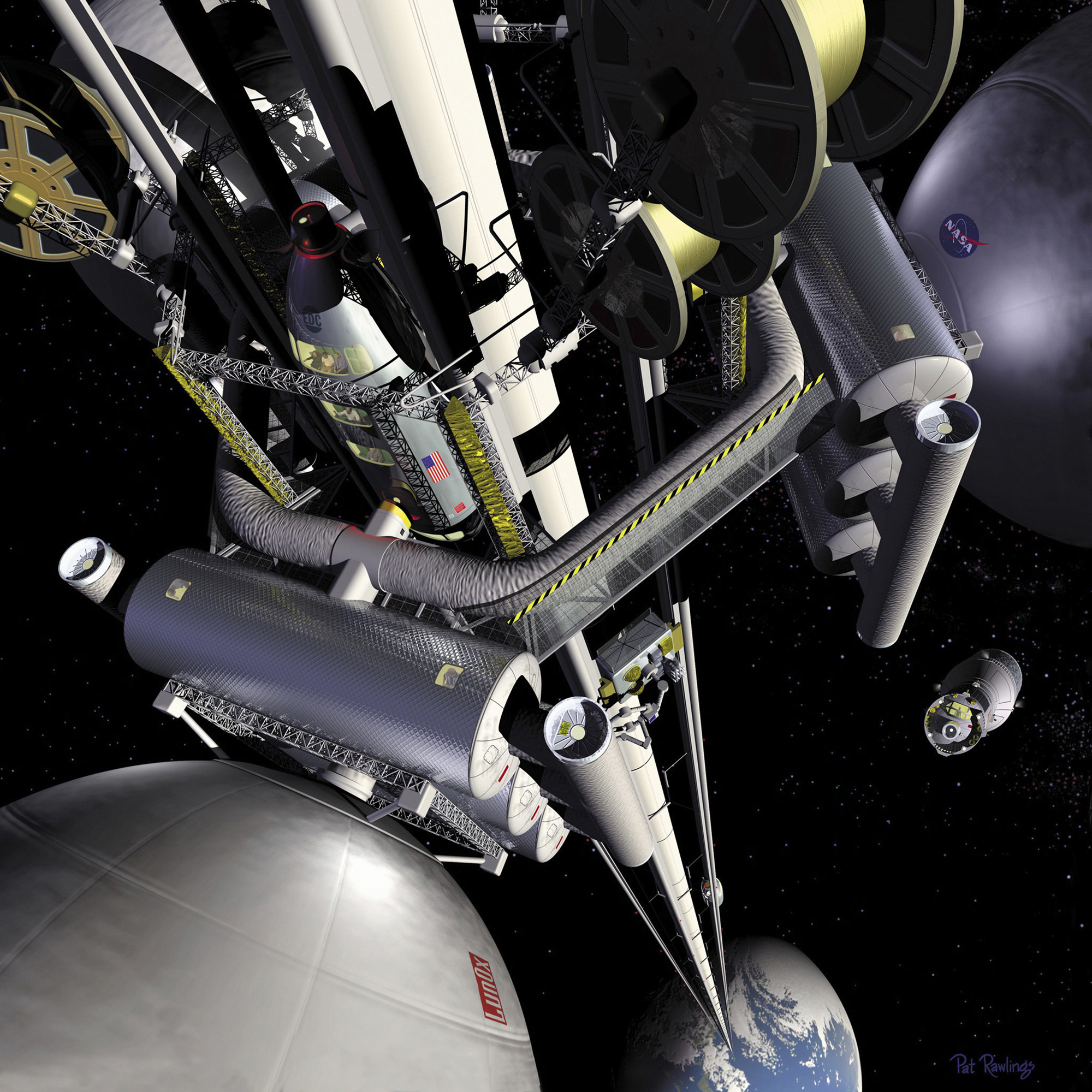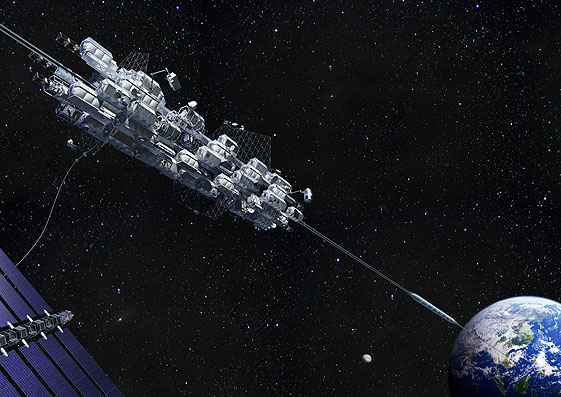Japanese Company Aims for Space Elevator by 2050

People could be gliding up to space on high-tech elevators by 2050 if a Japanese construction company's ambitious plans come to fruition.
Tokyo-based Obayashi Corp. wants to build an operational space elevator by the middle of the century, Japan's Yomiuri Shimbun newspaper reported Wednesday (Feb. 22). The device would carry passengers skyward at about 124 mph (200 kph), delivering them to a station 22,000 miles (36,000 kilometers) above Earth in a little more than a week.
In Obayashi's vision, a cable would be stretched from a spaceport on Earth's surface up to an altitude of 60,000 miles (96,000 km), or about one-quarter of the distance between our planet and the moon. A counterweight at its end would help "anchor" the cable in space.
A 30-passenger car would travel along the cable, possibly using magnetic linear motors as a means of propulsion, Yomiuri Shimbun reported. Passengers would disembark at the station, which would house living quarters and laboratory space, along with a solar-power generation facility capable of transmitting power to the ground.
For decades, space elevators have been touted by futurists and science-fiction writers, including Arthur C. Clarke, as an alternative to expensive (and relatively dangerous) rocket launches. But so far, nobody has managed to bring the concept into the realm of reality.
One major hurdle has been finding a material strong and light enough to build the incredibly long cable. Obayashi's optimism is fueled partly by its belief that a suitable material has finally been identified — tiny cylindrical structures called carbon nanotubes, which were first developed in the 1990s.
But nanotube tech isn't quite ready yet; engineers likely must find a way to manufacture them more cheaply and efficiently to make space elevators feasible, company officials said.
Breaking space news, the latest updates on rocket launches, skywatching events and more!
Indeed, the elevator's price tag could be the steepest hurdle to its construction.
"At this moment, we cannot estimate the cost for the project," an Obayashi official said, according to Yomiuri Shimbun. "However, we'll try to make steady progress so that it won't end just up as simply a dream."
Obayashi is not the only entity taking this dream seriously.
For example, NASA researchers released a lengthy report more than a decade ago citing the potential of carbon nanotubes to make space elevators possible. And the agency has sponsored the Space Elevator Games, a contest to develop precursors to this longed-for transportation system.
You can follow SPACE.com senior writer Mike Wall on Twitter: @michaeldwall. Follow SPACE.com for the latest in space science and exploration news on Twitter @Spacedotcom and on Facebook.

Michael Wall is a Senior Space Writer with Space.com and joined the team in 2010. He primarily covers exoplanets, spaceflight and military space, but has been known to dabble in the space art beat. His book about the search for alien life, "Out There," was published on Nov. 13, 2018. Before becoming a science writer, Michael worked as a herpetologist and wildlife biologist. He has a Ph.D. in evolutionary biology from the University of Sydney, Australia, a bachelor's degree from the University of Arizona, and a graduate certificate in science writing from the University of California, Santa Cruz. To find out what his latest project is, you can follow Michael on Twitter.

